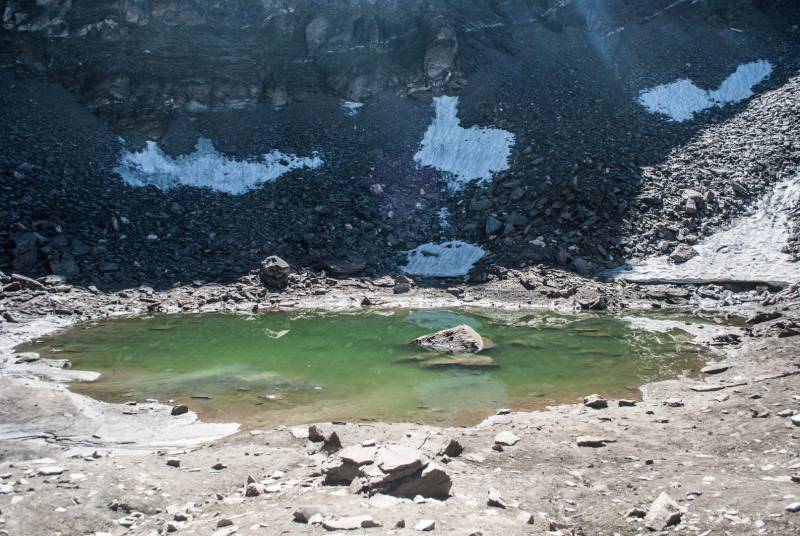Hyderabad based scientists solve Roopkund Lake skeletons mystery
By Anurag Mallick
Hyderabad: A genomic study by the CSIR, Center for cellular and molecular biology at Hyderabad has revealed that skeleton remains that have been found at the Roopkund lake, located 5000 meters above sea-level in the Himalayan mountains, are of Indian and Mediterranean origins.
The Roopkund lake, or as its nickname aptly states Mystery lake or Skeleton lake, after a lot of speculation has found answers to many questions. It has been suggested that these are the remains of an army or group of merchants who were caught in a storm. Another view is that they were victims of an epidemic.
A large-scale study conducted by an international team of scientists has revealed that the mysterious skeletons of Roopkund Lake are genetically similar to Indian, Mediterranean and Southeast Asian populations.
It was found that the genetically distinct groups died in at least two episodes separated by one thousand years. Ancient DNA obtained from the skeletons of Roopkund Lake, representing the first ancient DNA ever reported from India, reveals that they derive from at least three distinct genetic groups.
In a press release issued by the CSIR, it's Cheif scientist and Co-senior author at the CSIR, Mr Kumarasany Thangaraj said, "We first became aware of the presence of multiple distinct groups at Roopkund after sequencing the mitochondrial DNA of 72 skeletons. While many of the individuals possessed genetic information typical of present-day Indian populations, we also identified a large number of individuals with a genetic makeup that would be more typical of populations from West Eurasia." He initiated the work more than a decade ago, in an ancient DNA clean lab at the CCMB along with Dr Lalji Singh (Deceased).
Another co-senior author Dr Niraj Rai, who was a PhD student of CCMB and presently scientist at the Birbal Sahni Institute of Palaeosciences in Lucknow says, “The first group is composed of 23 individuals with ancestries that are related to people from present-day India, who do not appear to belong to a single population, but instead derived from many different groups. Surprisingly, the second large group is made up of 14 individuals with ancestry that is most closely related to people who live in the Eastern Mediterranean, especially present-day Crete and Greece. A third individual has ancestry that is more typical of that found in Southeast Asia. "
The study finds that the two major genetic groups were of approximately 1000 years apart.
The individuals with Indian-related ancestry died at Roopkund during the 7-10th century CE; possibly during several distinct events. The other two groups, likely composed of travellers from the eastern Mediterranean and Southeast Asia, arrived at Roopkund Lake during the 17-20th centuries.
Dr.Rakesh Mishra, Director, CCMB said, “This study highlights the power of genomics study, coupled with other biomolecular tools, in understanding our past and this study would pave the way for analysing a large number of skeletal remains, obtained from different parts of the country”.